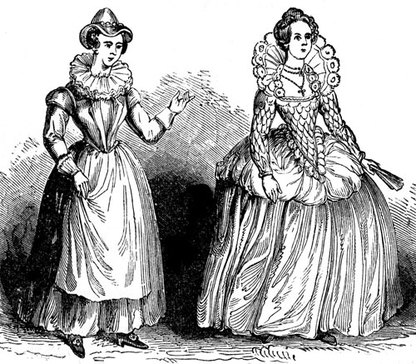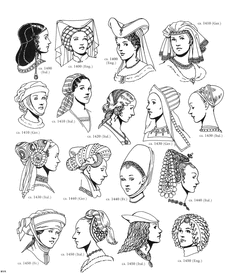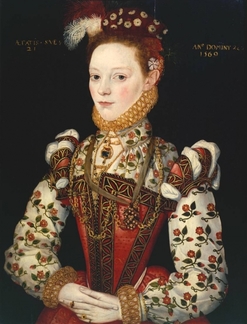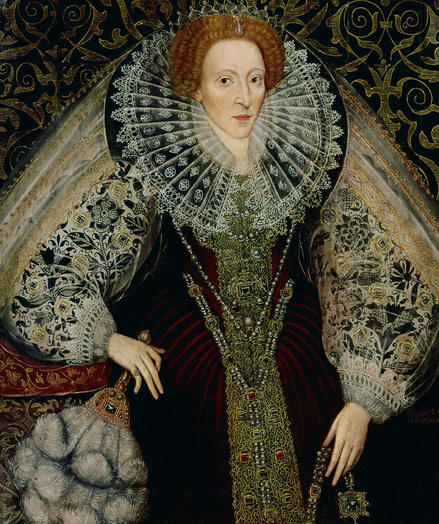
During the Renaissance period, women often wore long dresses. The dresses often consisted of detachable sleeves that were given by the groom to their new wives. The sleeves could also be passed down from mother to daughter, aunt to niece, or even be rented. To keep the dresses clean, the women would wear aprons or overdresses that were washable with linen chemises and shifts as underwear. The materials used to make the dresses would show the class of the woman, imported fabrics and rich textiles showed wealth while thin linen was worn by the lower classes. Wealthy women were well distinguished from the poor women, as their clothing were more complex and extravagant. The clothing they wore resulted in very constricted movement, as they had servants to help them put their clothes on. The lower class needed to work so they wore lighter and more comfortable clothing. In the image on the right, the difference between the outfits of the poor and wealthy are clearly noticeable.

Before women got married, they would wear their hair down. After they got married, they would wear their hair in complicated braids and twists. Matrons would wear veils over their hair, and widows wore hooded veils. Nuns wore habits and wimples, the color indicating their habitat: brown for the Franciscans and black and white for the Dominicans.
Women wore Pianelle on their feet, which were shoes that are much like today's open-toed mules or platform sandals. They grew to staggering heights during the Renaissance, mostly in Venice. Women wore them to keep the bottom of their dresses from getting dirty, also to show their wealth and give them an attractive sway to their walk. The women who wore Pianelle needed two servants to hold them on either side to prevent them from falling.
Women wore Pianelle on their feet, which were shoes that are much like today's open-toed mules or platform sandals. They grew to staggering heights during the Renaissance, mostly in Venice. Women wore them to keep the bottom of their dresses from getting dirty, also to show their wealth and give them an attractive sway to their walk. The women who wore Pianelle needed two servants to hold them on either side to prevent them from falling.

Cosmetics in the Renaissance Era included powders made from white lead, mercury, and vermilion (derived from cinnabar). Women in this era highly valued pallor. Pale ivory skin was highly desired so women who didn’t have that naturally used white lead powder to achieve it. Mercury was sometimes added to the white lead powder and rubbed into the cheek area in order to achieve the necessary effect. Some Renaissance women also used white lead powder, laced with mercury, to accent their bust lines.
